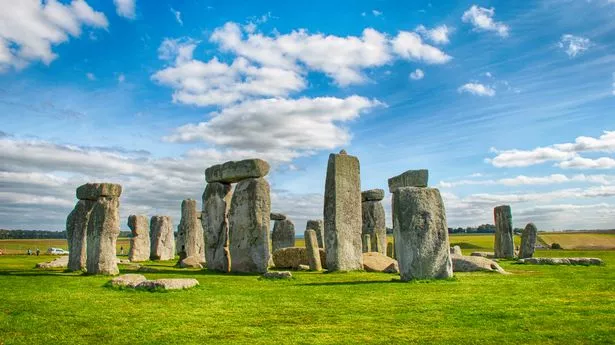By: Jeremy Sun
Stonehenge, an ancient monument on Salisbury Plain in Wiltshire, England, lies just two miles west of Amesbury. It comprises a ring of tall sarsen stones, each standing around 13 feet high, seven feet wide, and weighing about 25 tons, with horizontal lintel stones connecting them. However, the reasons behind its construction and how it was built remain a mystery, sparking various theories and stories over time.
The stories involve Merlin the wizard, the Devil, and giants.
The myth of Merlin the wizard originates from Geoffrey of Monmouth, who lived in the twelfth century. According to the tale, in the fifth century, a battle took place where many British nobles fought and died against the Saxons on Salisbury Plain, where Stonehenge stands today.
King Aureoles Ambrosias wanted to honor the fallen nobles by building a memorial. He planned to use a stone circle from Ireland called the Giants’ Ring, believed to have been brought there from Africa by giants with magical powers. The king sent Merlin with an army to bring these stones to England. Although they won the battle against the Irish, they couldn’t move the stones, so Merlin used his wizardry to transport them to their new location in England. This is just one of the most popular myths, but there are others too.
In another story, the Devil is said to have designed Stonehenge. The tale goes that an elderly Irish woman owned the stones initially. The Devil, disguised as a man, struck a deal with her: he would move the stones to England in exchange for paying her as many gold coins as she could count before he finished. Believing it would take him a long time, she agreed. Using his powers, the Devil swiftly transported the stones, denying the woman any gold.
Later, he challenged anyone to guess the number of stones in the monument. A wise friar correctly guessed, enraging the Devil, who hurled a stone at the friar, hitting his heel and leaving a mark. This stone is now known as the Heel Stone, located near Stonehenge. Thus, the story of the Devil and the Heel Stone adds a layer of intrigue to the history of Stonehenge, but so does the story of the giants.
Another tale suggests that Stonehenge came into existence when giants, who inhabited the plain, were mysteriously turned into stone while dancing in a circle and holding hands. This story arose from the resemblance of the stones to figures seemingly connected in a circle.
Although these legends are likely far from reality, they add an entertaining layer to scholarly theories about Stonehenge. Like many historical landmarks, Stonehenge is surrounded by folktales that speculate on its origin and meaning. These myths contribute to the fascination associated with such iconic monuments. Nevertheless, the true story behind the creation of Stonehenge will remain a mystery.











